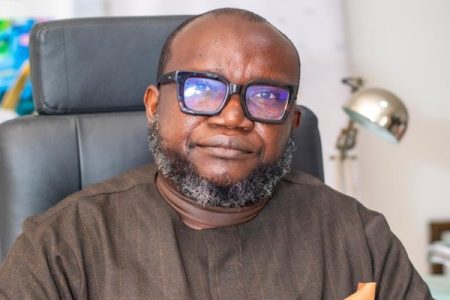The telecommunications industry in Ghana has spent over $17.4 million ($17,415,886.87) repairing 10,233 fibre optic cable cuts and replacing stolen gadgets between January and November 2024.
Each repair, on average, cost $1,639.61, highlighting the strain placed on the sector’s resources by repeated disruptions to the country’s telecom infrastructure.
Leading causes of fibre cuts
The damage to fibre optic cables has been linked to various activities, with road construction alone accounting for 20.68% of the cases.
Theft and vandalism followed closely at 13.98%, alongside private developer activities at 13.40%.
Other significant contributors include broken cable cores (11.81%), damage to poles and aerial networks (11.61%), and drain construction (9.51%).
Additional causes, such as fire, farming, floods (7.85%), mining activities (5.93%), and infrastructure-related activities by entities like the Ghana Water Company Limited (1.91%) and the Electricity Company of Ghana (1.08%), have compounded the issue. Railway construction and bridge works also contributed, albeit to a lesser extent.
Telecom industry voices concern
Industry leaders, including the Ghana Chamber of Telecommunications (GCT) and the Electronic Money Issuers (EMIs) Chamber of Ghana, have expressed alarm at the escalating financial burden.
Speaking during the inaugural Technology Industry Media Excellence Awards (TIMEA) in Accra, Dr. Kenneth Ashigbey, CEO of the GCT, warned that the frequent fibre cuts posed a grave threat to the stability of Ghana’s national fibre network.
“These disruptions are not just financial setbacks. They threaten the seamless connectivity and efficiency of our digital systems,” Dr. Ashigbey said.
He emphasized that funds earmarked for expanding and improving telecom services are being diverted to repair damaged infrastructure.
He also address critical issues, including protecting telecommunications infrastructure, policy, and regulatory matters impacting the industry
Fibre optics: A critical resource
Dr. Ashigbey underscored the importance of fibre optic cables as the backbone of the telecom sector, enabling faster data transfers and supporting high-bandwidth applications.
He stressed that these cables are critical for connecting network operating systems across the country, and their repeated destruction hampers Ghana’s digital growth.
Calls for policy reforms
To address the persistent issue of fibre cuts, the Chamber is advocating for policy reforms to minimize disruptions.
Dr. Ashigbey revealed plans for a framework that would prevent repeated digging in areas where roads have already been excavated.
This measure would enable telecom operators and other stakeholders to lay cables without causing further damage to existing infrastructure.
The Chamber has also engaged contractors through the Association of Contractors to raise awareness about the impact of fibre cuts and encourage collaborative efforts to mitigate them.
Push for specialized courts
To deter offenders, the GCT is championing the establishment of specialized courts to prosecute those responsible for damaging fibre optic cables and other related crimes.
“We must hold accountable those who undermine our national telecom infrastructure,” Dr. Ashigbey stated.
The way forward
The rising cost of repairing fibre cuts calls for urgent and coordinated action from all stakeholders, including government agencies, private developers, and law enforcement.
Addressing this challenge is not only a financial necessity but also a critical step in ensuring the reliability and resilience of Ghana’s telecommunications network.
With fibre optics serving as a linchpin for digital transformation, protecting this vital infrastructure is key to sustaining Ghana’s economic and technological progress.
- Friday, March 28, 2025 Newspaper Headlines - 28 March 2025
- MTN Ghana donates to Chief Imam to Support Eidul Fitr Celebrations - 28 March 2025
- Oxfam Ghana, GHS train 36 healthcare professionals - 28 March 2025

